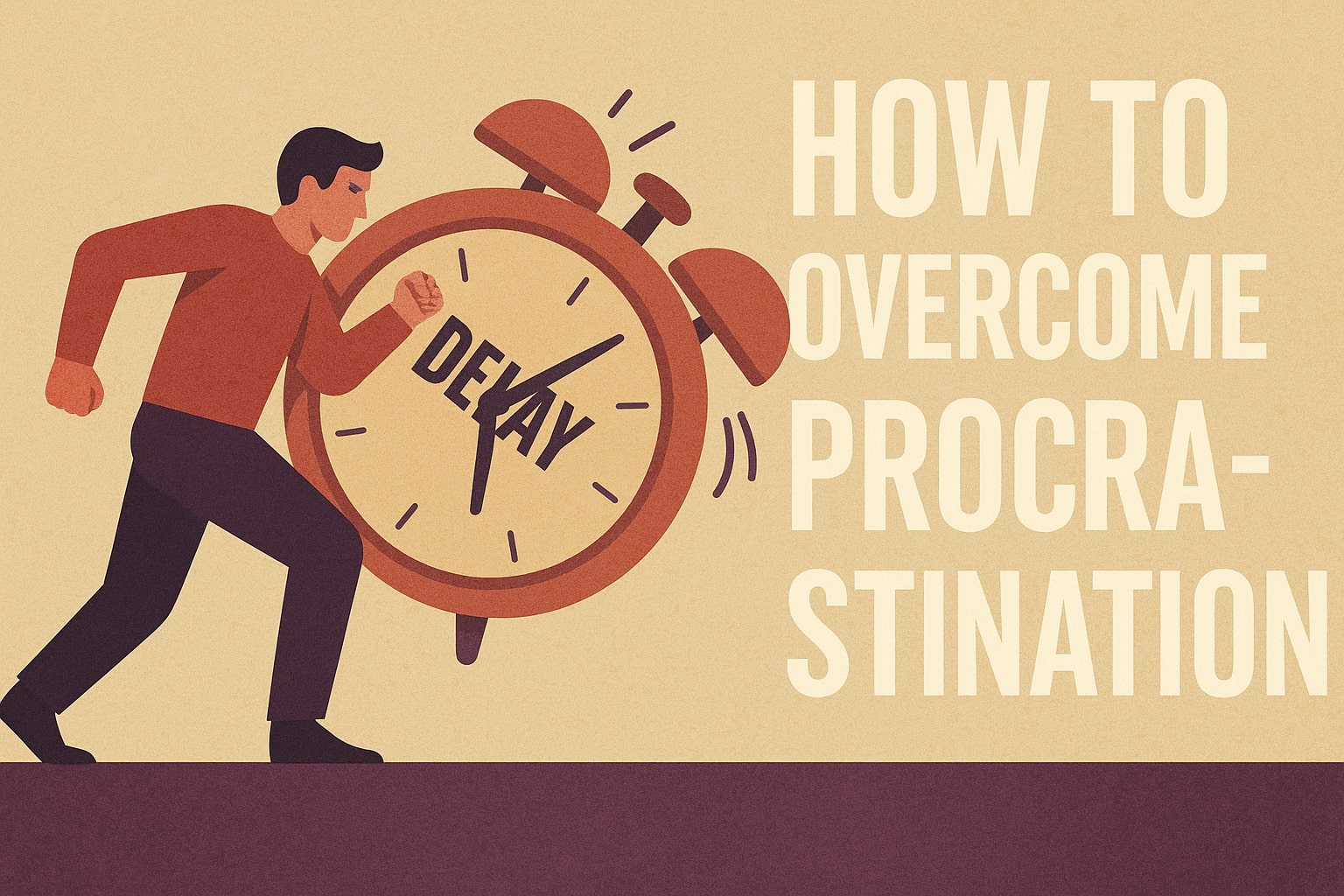Why Do We Procrastinate in the First Place?
Procrastination isn't about being lazy or lacking discipline. Research shows it's primarily an emotional response to tasks that trigger anxiety, fear of failure, or overwhelm. When faced with an uncomfortable task, your brain seeks immediate relief by avoiding it, even though this creates more stress in the long run.
The procrastination cycle involves negative emotions about a task, avoidance behavior for temporary relief, and then guilt and shame that make the task even more daunting. Understanding this cycle is the first step in learning how to stop procrastinating, because it helps you recognize that the problem isn't your character - it's your emotional response to certain tasks.
📺 Featured Video

How To Defuse Procrastination And Be Productive (Without Using Willpower)
by HealthyGamerGG
- The Two-Minute Rule - If a task takes less than two minutes, do it immediately rather than adding it to your to-do list.
- Time Boxing - Allocate specific time blocks for tasks, creating artificial deadlines that combat perfectionism.
- The Pomodoro Technique - Work for 25 minutes, then take a 5-minute break. This makes tasks less overwhelming.⏰ Life-changing for me: This literally saved my productivity! I was skeptical about 25 minutes being enough, but I get MORE done in focused bursts than hours of scattered work.
- Implementation Intentions - Use "if-then" planning: "If it's 9 AM, then I will start writing my report."
- Task Chunking - Break large projects into tiny, specific actions that feel manageable and less threatening.
- The 5-Minute Start - Commit to just 5 minutes on a dreaded task. Momentum often carries you forward.🔥 The momentum hack: Once you start that 5 minutes, you're already past the hardest part. I probably continue working 80% of the time because starting is always the biggest barrier.
- Environment Design - Remove distractions and create friction for procrastination activities (block websites, put phone away).
- Temptation Bundling - Pair unpleasant tasks with enjoyable activities (listen to favorite podcast while cleaning).
- Self-Forgiveness Practice - Research shows forgiving yourself for past procrastination reduces future procrastination.💪 Actually works: I forgive myself for yesterday's procrastination every morning, and it genuinely helps me start fresh instead of carrying guilt that makes me procrastinate more.
- Accountability Systems - Share deadlines with others or use apps that track your progress publicly.
- Reward Scheduling - Plan specific rewards for task completion, activating your brain's motivation centers.
- Energy Management - Schedule difficult tasks during your peak energy hours, typically 2-3 hours after waking.
- Fear Setting - Write down worst-case scenarios of not doing the task vs. doing it to gain perspective.
- Progress Tracking - Visual progress indicators (charts, streaks) provide dopamine hits that combat avoidance.
- Mindfulness Meditation - Regular practice improves emotional regulation and reduces anxiety-driven procrastination.
What Are the Most Effective Anti-Procrastination Techniques?
The most effective techniques for overcoming procrastination focus on managing emotions rather than forcing productivity. Breaking tasks into tiny, non-threatening steps reduces overwhelm. The 'two-minute rule' gets you started by committing to just two minutes of work, which often leads to continued progress.
Time-boxing creates boundaries that make tasks less intimidating, while the Pomodoro Technique adds regular breaks to prevent burnout. Mindfulness and self-compassion help you recognize procrastination triggers without judgment. Research also shows that forgiving yourself for past procrastination actually reduces future procrastination, breaking the guilt cycle that keeps you stuck.
How Can You Build Long-Term Productivity Habits?
Building lasting productivity habits requires rewiring your brain's response to challenging tasks. Start by identifying your procrastination triggers - specific times, emotions, or types of tasks that lead to avoidance. Create implementation intentions ('When X happens, I will do Y') to automate productive responses.
Environment design plays a crucial role in learning how to stop procrastinating permanently. Remove distractions, create dedicated work spaces, and use visual cues for important tasks. Accountability systems, whether through apps, partners, or public commitments, provide external motivation when internal motivation fails. Remember, the goal isn't perfection but progress - each small win builds momentum toward lasting change.
📺 Featured Video

How to Stop Procrastination?
by Quantum Project - Tharun Speaks
